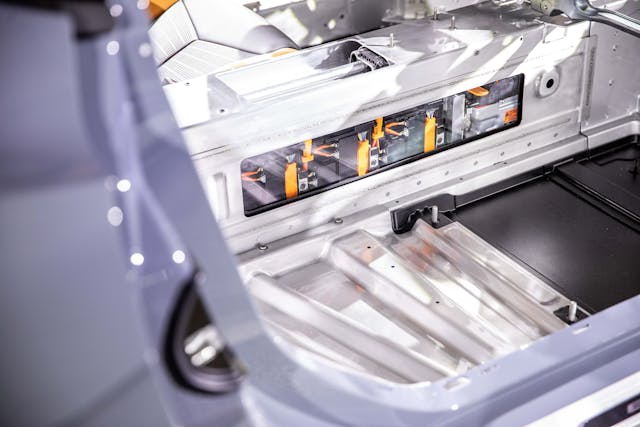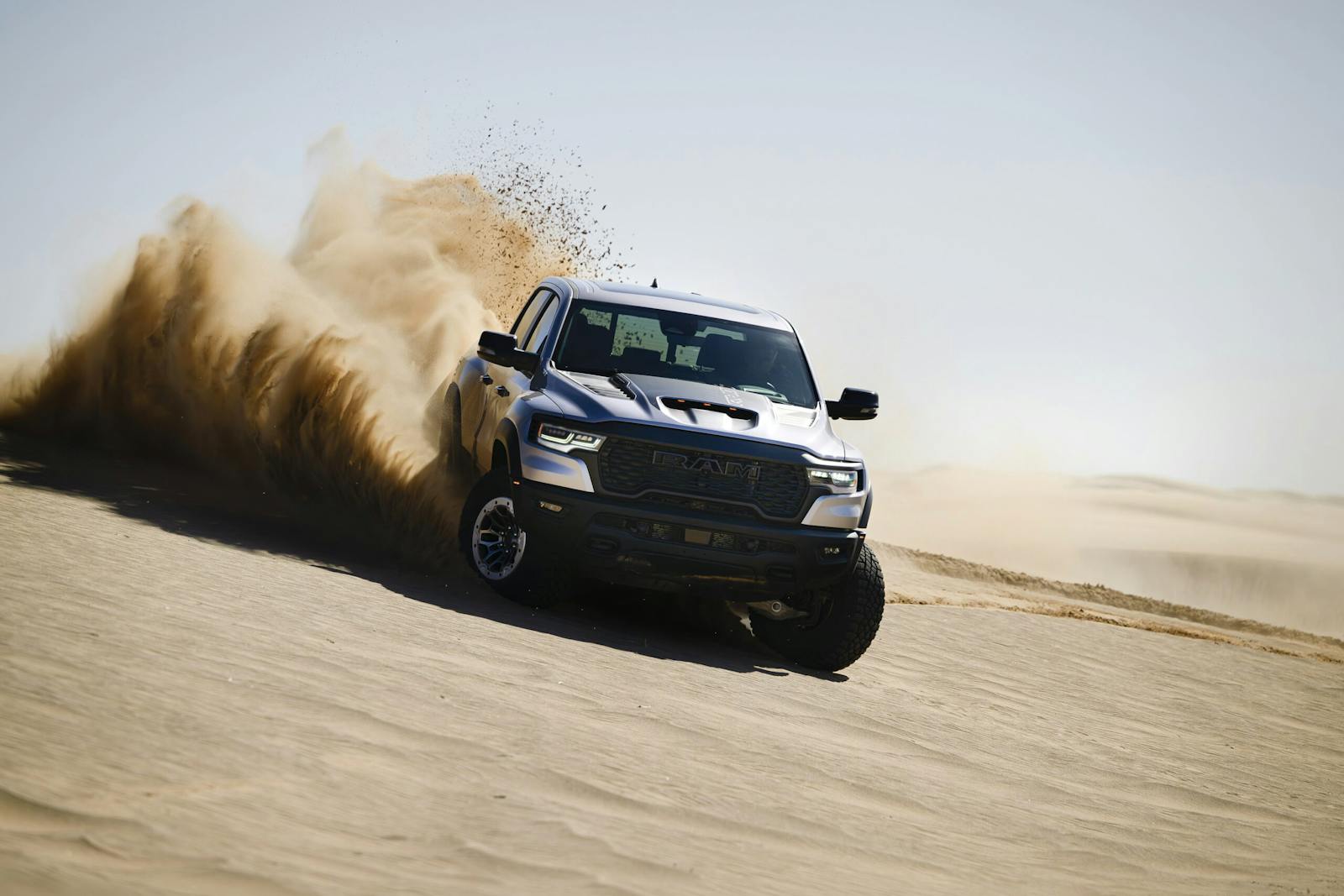Corvette E-Ray banned from competition by NCCC
The Corvette E-Ray is a hybrid, with a drivetrain that powers the front axle via an on-board battery and single electric drive motor. That has put it on the wrong side of the National Council of Corvette Clubs competition rulebook, rendering the E-Ray unwelcome at future track events organized by NCCC. The ban even extends to those who just want to spectate.
This news, reported on CorvetteForum.com, highlights the quickly-evolving landscape that the push for more battery-electric and hybrid powertrain vehicles has created. The specific rule that was amended in the 2022–23 competition rulebook is in section 1.8.1 number 14, and it outlines that any vehicles that possess a “lithium-type battery pack” are to be excluded from competition.

The NCCC’s Michigan website says there are “234 Clubs, in 16 regions, both east and west of the Mississippi … comprised of approximately 17,500 members. The Council’s competition database for 2023 includes mostly low-speed autocross events, but also various types of concours, rallies, cruises, and a handful of time trials.
The second part of this amendment even goes so far as to require that if these vehicles are driven to events, they can’t park with the other Corvettes:

NCCC’s rulebook may strike some as overly cautious or even a little extreme. As CorvetteForum.com points out, however, they’re not operating in a vacuum. Summit Point Motorsports Park in West Virginia recently put a “tactical pause” on hybrid and electric vehicles, “purely based on ensuring we establish an EMS response policy and procedure based on technical knowledge provided by the electric and hybrid electric vehicle industry community,” said the track’s Director of Motorsports Operations.

Many Corvette owners are also keenly aware of Chevrolet’s recent recall efforts regarding Bolt EV fires. Like the Bolt, the E-Ray uses lithium-ion pouch-type batteries sourced from LG Chem. Two years ago the National Transportation Safety Board released a statement regarding the risk posed to first responders handling an incident involving high-voltage lithium-ion batteries. The statement outlined not only the shock risk but also the thermal runaway potential that can lead to re-ignition of what was thought to be a controlled or extinguished fire.

Statistics confirm that gasoline cars actually experience a higher incident rate of fire than pure battery-electric vehicles, but hybrids fare the worst. Perhaps the bigger concern is that our present ability to control and extinguish a gasoline-fueled fire considerably exceeds that of battery fires; until the technology and equipment readily available to first responders catches up, organizers may further amend rules and regulations to fill the gap. We expect hybrid and EV proponents, not to mention E-Ray owners, may in the meantime feel that such policies represent a disproportionate reaction to the degree of risk.
The conditions of track use may subject the electric portion of the Corvette E-Ray’s drivetrain to rapid charging and discharging. Of course, it would be hard to believe that Chevrolet engineers did not account for this when crafting a 655-horsepower supercar that they expect some drivers to bring to the track. How the E-Ray behaves long-term and in the real world will become clearer when the first production examples reach customer hands later this year.

***
Check out the Hagerty Media homepage so you don’t miss a single story, or better yet, bookmark it. To get our best stories delivered right to your inbox, subscribe to our newsletters.



Seems a call made by insurance underwriters, and an understandable one as it relates to track worker safety and potentially significant damage to track and other equipment. So long as thermal runaway remains a potential threat, I suspect the only way lithium battery powered vehicles will be allowed on a track is if there are floodable pits available for marshals to push a wrecked EV into.
I’m sure we’ll see this happening at more and more tracks, with the current ability to deal with the exothermic reaction of Li-ion batteries when they reach thermal runaway it’s much more that current track officials can handle. unfortunately flood-able pits will not solve the problems as these types of fires do not need oxygen to burn (their chemical reaction creates its own oxygen) and Lithium is volatile in water. the only promising produce on the market at the moment is “F500 Encapsulating Agent”. perhaps steel containers would offer a slightly better solution, not that they will put out the fire but at least contain it until the fire is out (which could be several hours) another problem is that one of the byproduct of Li-ion battery fires is the production of the smoke that contains Hydrogen Fluoride and when mixed with water (or body fluids like eyes, lungs, mouth, nose) converts it into extremely caustic Hydrofluoric acid.
What is needed is the increased concerted research into capacitor batteries IMO
I wonder if they’ll be this stressed out when the Corvette SUV comes out.
Maybe they should condemn Galileo for saying the Earth revolves around the Sun?
As someone who saw his friend burn to death in a Tesla crash, I agree. Fire departments and safety people are not equipped to extinguish a lithium battery fire. It is unstoppable once it ignites.
These clubs are made for “REAL CORVETTE’S” not made up one’s !!!! EXCELLENT !!!!
Probably the worst thing they could have done as a Corvette is supposed to be a driver’s car and in turn give that driver every advantage. Their logic is just plain backwards and wrong.
I vaguely remember reading a recent article about an electric car which was involved in an accident. It took the fire company 1200 gallons of water and several hours to put the fire out. I carry a small fire extinguisher in my car for the unlikely event when there is a fire in my or someone elses car starts burning.
I agree with them banning them. Look what happed at the Ford F150 facility earlier this year as ine electric truck caught on fire and birnt 2 others nearby.
Ill stay with real cars that are gas powered.
I am glad NCCC did this
When the new 4 door charger came out years ago, they were not allowed at the real 2 door charger show in Boerne Texas about 15 years ago.
It’s common sense. Just go to YouTube and type in “Tesla fire”. Until track officials have the means to handle a lithium battery fire, keep ‘em off the track. Best way to keep ‘em off the track is to keep them out of events. Best way to keep ‘em away from the events is to keep ‘em out of the club. If you think that sounds like a scorched-earth policy, just watch an EV battery fire. Then you’ll know what scorched earth looks like.
.That also puts a final nail in the coffin for ICE engines as inferior and EV as superior. Looks like the debate is over
Kudos to NCCC! The problems with EV’s is far deeper than meets the eye.
So now NCCC is now irrelevant . Their events have safety concerns and services handled by outside contractors (fire and medical/ambulance services). Hopefully the contractors are familiar with accidents and injuries that might occur at NCCC events, which should now include handling fires in hybrid vehicles. If they are not, well… Maybe they should not be supplying safety services at ANY NCCC event. Over the last few years, most fire departments have had training to handle Electric and hybrid vehicle fires.
Most of the cars that run NCCC events have stock type fuel systems, meaning no fuel cells with internal bladders. The cars may even lack full 5 or 6 pt harness, or roll over protection beyond that provided by the factory. My guess is that the E Ray may have better protection for its fuel/power systems than any Vette built before 2022.
And to not allow it to park at an event with the other Corvettes… Well, that’s just stupid. I see a problem with the NCCC’s management, and some professional jealousy, as in “my new E Ray is faster than your old big block”. I am sure that by now, some E Ray has parked next to an Aston, McLaren, Ferrari Maserati or perhaps a Bugatti (worth more than an entire parking lot full of common Corvettes). It is entirely probable that the owners of those hyper expensive hyper cars didn’t care that there was an “explosive” Corvette parked next to their machines. The whole idea that somehow the new E Ray is more dangerous just sitting parked than any other Corvette is preposterous. Sort of like not parking next to a Corvair because it might spontaneously spin and hit other cars.
Electrical fires and specifically batteries are a wholly different breed of multi-headed rattlesnake.
Sounds like the only issue is putting out the Lithium fire and tracks are not at all prepared to put them out without considerable expense to upgrade their equipment.
How could they possibly enforce this without a qualified person inspecting cars? Sorry pal, you can’t come in because “lithium type battery packs” are banned. You respond, “my battery pack isn’t lithium…I have an upgraded pack that’s somethingelse-ium…”
…or just swap Eray badges and wheels for Z06 badges and wheels. Obviously the sound would be different, but prob could slip thru